The joints of the ceiling and walls cannot be ignored. The best way to design this part of the room is the ceiling skirting board.
What are the types of ceiling skirting boards?
Consider what ceiling skirting boards are depending on the shape of the product. You can buy an injection model, it has bulges and emphasized relief. The product with small grooves and recesses along the filter is considered extruded. The standard smooth surface is inherent in the usual laminated skirting board.
Polystyrol is the most budget option. The surface is matte, smooth or with a relief pattern. Polyurethane products are better. The rubber adds strength and flexibility at the same time. Such a basis is not afraid of high humidity, so feel free to fasten it in a bathroom or pool. You will have to pay more for quality. For fixing plastic panels, PVC skirting boards are required. The cost is moderate, wide color scheme, to care and fasten such a finish is very simple.
Types of wooden ceiling skirting boards depend on the tree breed from which the panel is produced. Pine is popular. Ultraviolet hardening is used as additional processing. The naturalness of products and its durability attract consumers, the price scares away. The main disadvantage, despite the cost, is insufficient plasticity (flexibility).

|
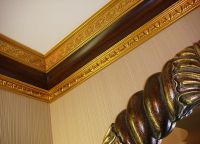
|
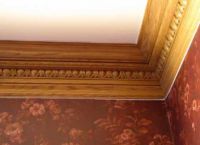
|
You can emphasize the ceiling and distinguish it with the wall due to stucco molding. Aesthetics is at a height, but with such material it is difficult to work due to its weight and fragility. For suspended ceilings you need polyurethane finish. In addition, “sewing up” the ceiling is also worth a soft skirting board. It is barely noticeable, without the texture and pattern. Its flexibility allows you to framed the surface as neatly as possible.
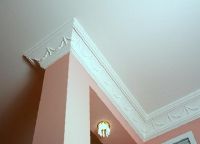
|
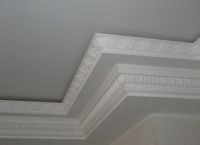
|
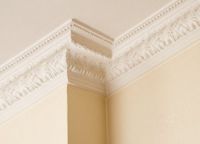
|
If the walls are faced with wallpaper or it is planned to paint with water -based paint, the filler is attached to the start of the finish of the walls. Often the ceiling and its edging are painted together in one color. Remember, the smoother the walls, the fewer cracks. It is very important to do the corners correctly. Do the pruning in Stuslet, polish the edges.
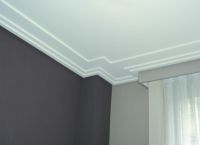
|
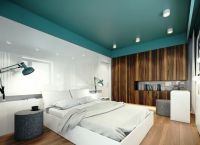
|
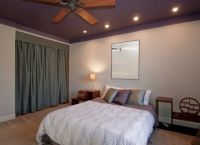
|
For ceiling skirting boards, the types of “gluing” differ to the wall. The wooden base is attached to the wall only due to wall fasteners. Polystyrene, polyurethane can be planted on “liquid nails”, finish putty. To fix gypsum baguettes, a putty or alabaster is needed. It is convenient to apply special glue with a mounting gun. Silicone sealant is better not to use, you cannot paint over it. Typically, the mixture is applied to the panel itself, then the product is pressed against the wall according to the adjustment marking. The work begins from the corner, excess glue is removed by a rubber spatula or a clean cloth.
Which ceiling skirting board is better to choose in the interior?
Depending on the overall style of the room and repelled to solve what color and texture the ceiling skirting boards must be. The classic needs luxury, so products with imitation of stucco molding or wood threads are suitable. For restrained English design, smooth, not thin panels are appropriate, often with tinting. For minimalism, nothing is required except subtle framing, a maximum modest geometric pattern. If the room is ungarious, the walls are plain, add aesthetics using a voluminous pattern. If there is a drawing on the plinth or it is color, it is worthwhile in a shade to any plane or a specific element. This approach will provide a smooth transition.
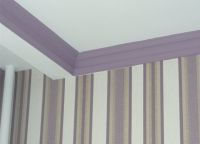
|
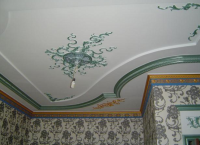
|
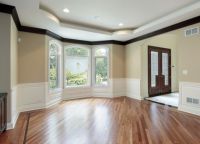
|
Wide products smooth out the corners and, with proper installation, hide defects of the butt joints. In a room with a low ceiling, it is strictly not recommended to use wide fillets, the view will be bulky. If you are not sure how your “solution” will fit into the interior – the average thickness and neutral color is almost always a good idea.
